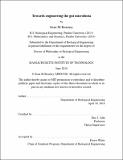| dc.contributor.advisor | Eric J. Alm. | en_US |
| dc.contributor.author | Kearney, Sean M. (Sean Michael) | en_US |
| dc.contributor.other | Massachusetts Institute of Technology. Department of Biological Engineering. | en_US |
| dc.date.accessioned | 2019-01-11T15:05:34Z | |
| dc.date.available | 2019-01-11T15:05:34Z | |
| dc.date.copyright | 2018 | en_US |
| dc.date.issued | 2018 | en_US |
| dc.identifier.uri | http://hdl.handle.net/1721.1/119909 | |
| dc.description | Thesis: Ph. D., Massachusetts Institute of Technology, Department of Biological Engineering, 2018. | en_US |
| dc.description | This electronic version was submitted by the student author. The certified thesis is available in the Institute Archives and Special Collections. | en_US |
| dc.description | Cataloged from student-submitted PDF version of thesis. | en_US |
| dc.description | Includes bibliographical references. | en_US |
| dc.description.abstract | The human gastrointestinal tract is home to a dense and dynamic microbial community. Recent advancements in sequencing technology have revealed numerous relationships between the composition of these communities and human and health and disease. In some cases, researchers have shown causal relationships between the presence or absence of particular microorganisms and disease. These findings offer promise for using microorganisms or microbial communities to modulate health and disease, but to date, we lack tools and mechanistic insight needed for rational engineering of these communities. Understanding how microorganisms enter, colonize, grow, and disperse to new hosts present key considerations for rational engineering of the human gastrointestinal tract. In this thesis, I use experimental studies of the human and murine gastrointestinal tract to address these considerations. In the first study, I examined endospores and other resistant cell types in the gastrointestinal communities of unrelated humans to identify the ecological role of these states in the distribution of bacterial populations in healthy people. I used this information to infer shared roles for these organisms in successional states in the human gut, and identify host- and diet-derived metabolites as environmental signals mediating the growth and colonization of these organisms. In the second study, I examined the potential for using targeted manipulations of diet to favor selective growth and colonization by an introduced bacterium in the murine gastrointestinal tract. I showed that resource exclusivity of this bacterium permits its selective expansion in this environment, and negatively impacts the growth of other commensals. Central to the goal of rational engineering of the gut microbiota, these studies reveal ecological considerations that may promote or inhibit colonization by introduced commensals in this complex ecosystem. This work invites provides a conceptual framework for integrating systems microbial ecology with engineering design to manipulate the composition of the gastrointestinal microbiota. | en_US |
| dc.description.statementofresponsibility | by Sean M. Kearney. | en_US |
| dc.format.extent | 128 pages | en_US |
| dc.language.iso | eng | en_US |
| dc.publisher | Massachusetts Institute of Technology | en_US |
| dc.rights | MIT theses are protected by copyright. They may be viewed, downloaded, or printed from this source but further reproduction or distribution in any format is prohibited without written permission. | en_US |
| dc.rights.uri | http://dspace.mit.edu/handle/1721.1/7582 | en_US |
| dc.subject | Biological Engineering. | en_US |
| dc.title | Towards engineering the gut microbiota | en_US |
| dc.type | Thesis | en_US |
| dc.description.degree | Ph. D. | en_US |
| dc.contributor.department | Massachusetts Institute of Technology. Department of Biological Engineering | |
| dc.identifier.oclc | 1080639244 | en_US |
